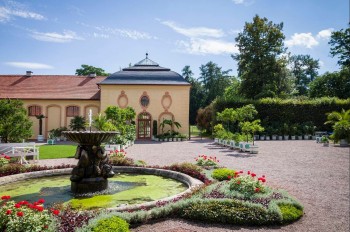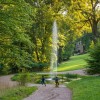Contents
Description
Belvedere Palace is beautifully located withing an extensive park garden in the south of the Thuringian city Weimar.
Since the early 1920s, Palace Belvedere has accommodated a museum of applied arts relating to the palace's interior fitting. The first samples of the museum were the duke's collection of porcelain and glasses, furniture and court accessories. In addition, there are eastern Asian porcelains and samples from Thuringian manufactures as well as early pieces of the famous porcelain manufacture in Meißen.
The exhibition in the west pavilion is dedicated to the architecture and horticulture by Duke Ernst August, whereas the east pavilion offers a glance at weapons that were used for courtly huntings in the 18th century.
Historical Information
Duke Augustus of Saxe-Weimar-Eisenach had the baroque summer residence including orangery, maze and pleasure grounds built between 1724 and 1748. The palace was initially used as a hunting lodge and is surrounded by stables and so-called cavalier houses.
Duchess Anna Amalia spent her summers at the palace, while Duke Carl August focused on botanic research together with his companion Johann Wolfgang von Goethe, the most acclaimed writer in German literary history. This way, a botanical garden had been created by 1820, accommodating 7,900 indigenous and exotic species of plants. Around that time the duke's son had the Russian garden created for his Russian spouse. The partially wild-growing garden was designed in a classical-romantic manner.
Interesting facts
- The day pass at Belvedere Palace Weimar is €7 making it one of the 5 cheapest tourist Attractions in Thuringia.
How to get there
Palace Belvedere is located in the south of Weimar's city centre. If you follow the Belvedere Allee leading through Oberweimar, you will get to the palace.












